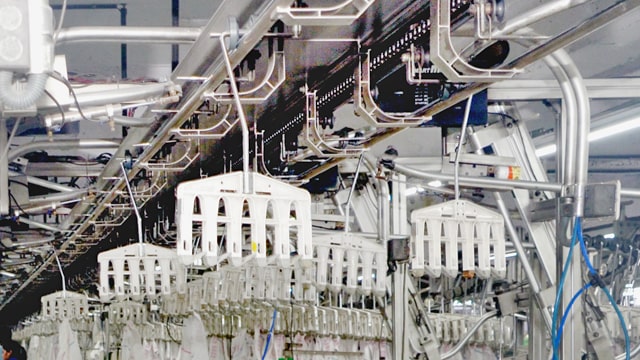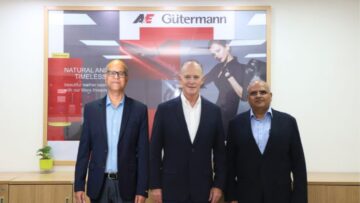Unit Production System, or UPS, is a popular jargon to denote apparel manufacturing system and at times means material handling system. Yes, it is true that Inge Davidson, who invented Unit Production System, also invented overhead material handling system for transporting cut components on the sewing floor. But, the fact remains that Unit Production System (UPS) is basically a manufacturing system while overhead material handling system is merely an enabler (equipment) to help the system perform. There are several similar myths regarding UPS which need to be redressed.
UPS is a manufacturing system
Right
UPS is one form of manufacturing system which uses division of labour. UPS may be defined as a sewing practice where all cut components of one garment are bundled together and passed through a line of operators. The operator reaches out to the components, performs specific functions, puts the sewn piece back into the bundle and passes it to the next operator. Hence, the essence of UPS is – “All cut components of one garment should be in one place”.
Overhead material handling system is mandatory for working in UPS
Wrong
Although UPS is synonymous with overhead material handling system, it is merely a coincidence that almost all companies following Unit Production System (in sewing) use overhead material handling system as a means of transporting partly finished components to next operators. However, it is also possible that all cut components of one garment are passed from one operator to another in a single tray or in one polybag. Therefore, whether it is the bundle, tray, polybag or hanger, it is the system of manufacturing (sewing) which is called unit production system where one unit of garment is processed in one place. It is a fact that UPS system while clubbed with overhead material handling system generates maximum benefit.
Ticketing of cut components can always be eliminated while following UPS
Wrong
The reasons behind ticketing of parts or plies are two-fold: Either avoid ply mix up (thus avoid shade variation) during assembly or identifying the right/wrong face of fabric. If the face and back of fabric is easily recognizable, then there is no need to put sticker (so ticketing can be avoided); however if the fabric face is not easily recognizable from the back, one may have to continue ticketing of cut components even in UPS system.
UPS with overhead material handling system is preferred for structured garments
Right
Progressive bundle unit system is common method of sewing in assembly line manufacturing system. The word ‘bundle’ usually makes us visualize 10 to 20 big and small cut components or partly sewn components, rolled and tied by one cloth string. While sewing structured garments like blazers, the parts can’t be bundled as most of them are stitched/fused/pressed to impart 3D shape which they will otherwise lose when bundled. Thus overhead material handling system is preferred to transport the components in hanging condition. An overhead material handling system also accrues benefits like cleaner pieces for whites (no spillover from cartons, no trampling, and no dirt).
UPS with overhead material handling system reduces handling time during sewing
Right
In some operations the components are hanged in such a way that operator can sew while the component is in hanging position, thus saving lot of handling time during sewing. However, not all operations in a garment can be sewn in such a manner because they vary in style. When compared with PBU system, the UPS eliminates practical bundle handling, i.e. tying and untying of bundles, while allowing the cut components to be easily transported as a unit directly to the needle point.
UPS with overhead material handling should be implemented in assembly section only
Right
In order to sew a garment, at times it is necessary to stitch its multiple small parts separately in a different module or line, but simultaneously. Later these small parts along with the other parts are stitched in a PBU or UPS (e.g. collar and cuff of same garment can be prepared parallel by multiple operators). Small parts need to be tucked in and tucked out from hanger during sewing, thereby defying sewing in hanging condition. Moreover small parts are usually done in parallel operations. Therefore, as a thumb rule UPS should be avoided in parts preparation section and only implemented in assembly section.
UPS with overhead material handling reduces work in process
Right
Factually UPS does not have any direct relation with work in process (WIP) in sewing line. However, if we analyze the results of few implementations then the above myth comes out to be true. WIP is a buffer in a line maintained, for firstly, to balance the output (varying work content of sewing) of different operations; and secondly, to ensure supply to next operation in case of a machine breakdown or absenteeism. While the first reason can be definitive calculation, the other two represent the ‘just in case’ scenario, in true sense, as a replacement of lack of information. In traditional PBU system, WIP is maintained in cartons/trolleys/bins where bundles are piled up one over another. Thus, counting and analyzing WIP in a line is cumbersome, thereby resulting in unaccounted pieces and thus increasing uncertainty and allows for increased WIP. When accompanied by overhead material handling system, UPS actually makes the WIP visible; one can easily count (or it gets automatically counted) how many chains or hangers are there between any two operations.
Unit Production System reduces throughput time
Wrong
When compared with PBU system, UPS does not reduce throughput time, rather increases the same when implemented in complete line. Throughput time is measure of the time lapsed between the first sewing operation on the cut components to the last sewing operation on any one particular garment. It is the overhead hanging system that helps in reducing WIP, thus it is the same overhead hanging system that helps reduce throughput time in comparison to other methods of material handling system.
UPS with overhead material handling automatically balances the line
Wrong
The overhead material handling system may be mechanical or computerized. In a mechanical system (like switchtrack, UHS) the hangers/chains requires to be moved manually (physical effort), here decision regarding how many hangers should go to which operation is decided by the supervisor, hence balancing is not automatic. In a computerized system the movement of hanger is electro-pneumatically controlled. The decision regarding which hanger will go to which operation is controlled by pre-decided algorithm, hence balancing is computerized.
UPS with overhead material handling creates claustrophobic work atmosphere
Right
As garment components are hanging between workstations, it obstructs the line of visibility. The operator feels like surrounded by hanging components, eye contacts with fellow operators are sometimes difficult. This also obstructs the ceiling light intensity at needle point, thus necessitating use of needle light on every sewing machine.







